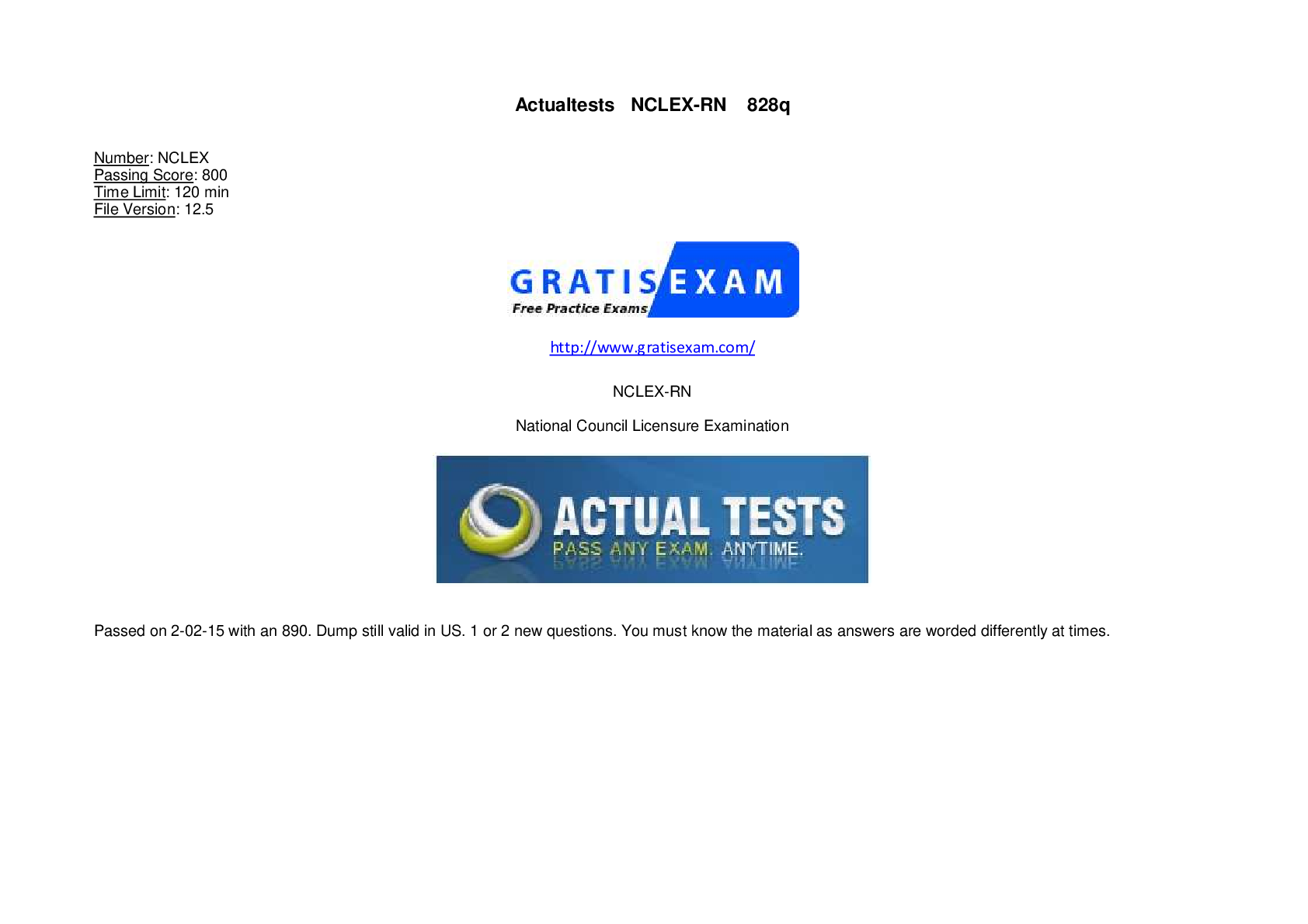Actual tests NCLEX-RN 828q
Course
Project Management
Subject
Chemistry
Category
Questions and Answers
Pages
424
Uploaded By
ATIPROS
Preview 5 out of 424 Pages


Download all 424 pages for $ 20.50
Reviews (0)
$20.50
